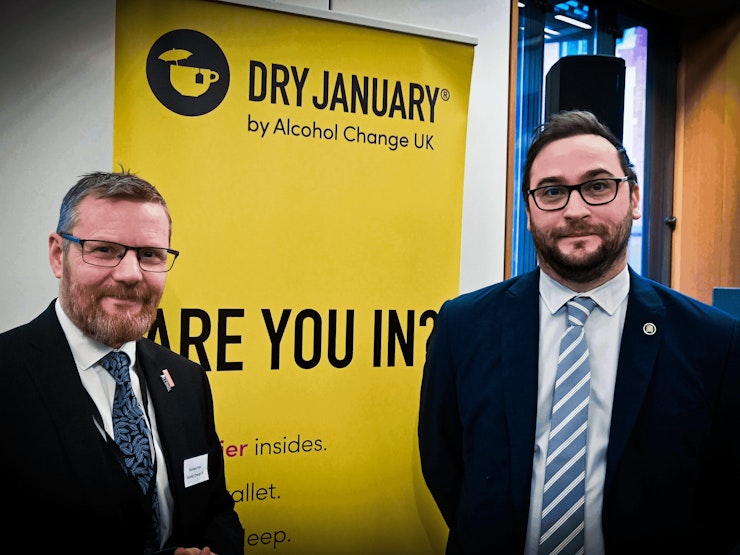Through this research, the team at Alcohol Change UK, as well as teams from other Alcohol Health Alliance member organisations across the UK, became very adept with a ruler. We spent hours measuring and recording alcohol labels – more than 400 in total – in shops across the UK. Why? Because far too often, these labels are inadequate, and it’s time to hold the alcohol industry to account.
Unlike all other food and drink, there are no legal requirements to include vital health-related information on alcohol product labels. Different sectors of the industry decide to include or exclude elements, with no cross-industry consensus or enforcement if labels are not up to scratch. Some manufacturers do provide information such as ingredients, calories, drinking guidelines and number of units, but this is optional, and when they do include these elements they are often too small to read. Where health information is displayed it is often out of date and misleading.
All of this has long been common knowledge in the alcohol sector – but we and the AHA wanted to gather evidence and to establish just how widespread the issues are, because we as consumers have a right to know what is in the products we buy and their health risks. Why should alcohol be any different?
We had another reason to do this research now. Back in 2016, the UK’s Chief Medical Officers updated their low risk drinking guidelines. The alcohol industry’s self-appointed “social responsibility body” the Portman Group agreed with Government that it had three years to put these on labels – meaning a deadline of September 2019. We wanted to check whether they had met this very generous deadline.
In a survey of over 400 items, we looked at eight elements which could be included on labels and measured the size of the text and symbols to see if they were legible. These elements were:
- The Chief Medical Officers’ low-risk drinking guidelines
- Number of alcohol units per container and per serving
- A pregnancy warning
- A warning which highlights the health risks of alcohol consumption
- Ingredients
- Nutritional information (including calories)
- A drink-driving warning
- An under-18 age warning
We took photographs of labels in a range of supermarkets and shops across the UK. The most popular products on the market were surveyed at multiple locations. The data was analysed to see if there were patterns by drink type, manufacturer type and across industry membership bodies. You can find out much more about out methodology in the full report.
Without an independent organisation setting and enforcing labelling requirements, we’ve found that the majority of labels do not include vital information, or worse still, display out-of-date, misleading information.
We found cases of inconsistencies, even between the same product sold at different locations, with some showing out-of-date drinking guidelines and others showing current guidelines. This means that people living in some parts of the country are being told they can drink up to twice as much per week and remain at low-risk from alcohol-related health harms compared with people in other areas.
This new research comes at an important time for government policy on alcohol labelling. The UK government has recently announced its plan to consult on calorie labelling
for alcohol as part of its obesity strategy. This is a step in the right direction, but as this report shows, calorie information is only one of many needed elements of a comprehensive, informative label.
We are calling for the UK Government to make comprehensive alcohol labelling mandatory. The Scottish Government are leading on this, having stated that they will legislate on alcohol labelling requirements if there is insufficient progress with the current voluntary system. We believe the time to do this is now. Our report strongly recommends that an independent agency sets out and enforces comprehensive labelling requirements, putting an end to the inadequacy of the industry’s voluntary system of alcohol labelling.


